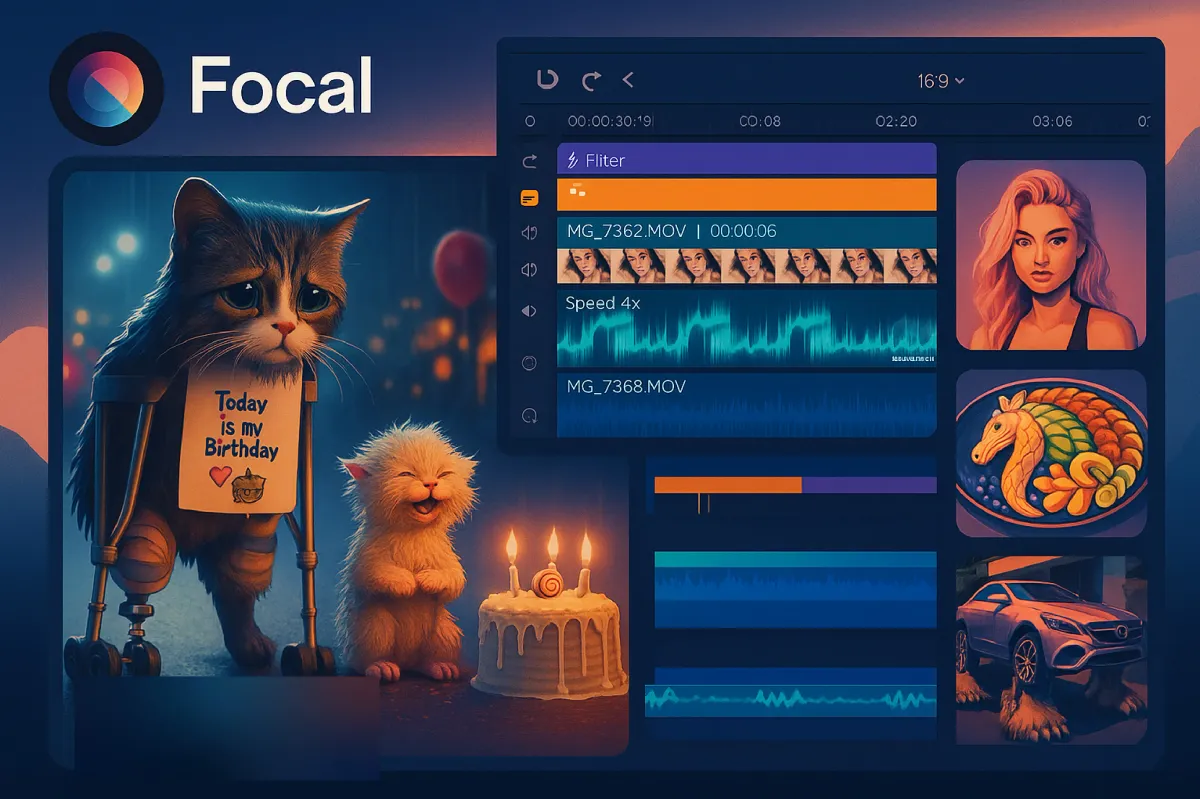Why “AI Slop” Is Flooding TikTok, Facebook, and YouTube Shorts

What Is “AI Slop” and Why Does It All Look the Same?
"AI slop" is a term creators and viewers are increasingly using to describe low-effort, overly-polished, and often nonsensical content generated by AI—especially image and video content. This includes:
- Hyper-saturated colors
- Unrealistically flawless people or animals
- Confusing or surreal scenarios
- Lip-synced voiceovers paired with unrelated visuals
- Explainer-style videos with AI narration and stock-style animation
These outputs aren’t random. They reflect how generative AI models are trained: they aim to produce average perfection across billions of examples. The result is technically impressive but artistically shallow.
5 Distinct Signs You’re Looking at AI-Generated “Slop”
| Feature | Human-Created Content | AI-Generated “Slop” |
|---|---|---|
| Facial Expressions | Nuanced, varied, emotive | Frozen smiles or exaggerated symmetry |
| Backgrounds | Contextual and specific | Vague, dreamy, or surreal |
| Motion (in videos) | Imperfect but natural | Over-smoothed or oddly weightless |
| Story or Idea Depth | Personal or emotional nuance | Generic “life tips” or listicles |
| Language in Voiceovers | Natural tone and cadence | Over-enunciated, monotone, robotic |
The issue isn’t that AI can’t create realistic things—it’s that it tends to create the same kinds of realistic things, over and over again.
Why Is It So Common Now?
- Cheap to Produce: Creators can generate a video with a fake person giving “advice” or a slideshow of AI art in minutes. No actors, no gear, no filming needed.
- Shortform-Optimized: Platforms like Shorts and TikTok reward constant uploads. AI makes this pace sustainable.
- Ad Revenue and Affiliate Farming: Many “AI slop” videos exist purely to get clicks, push affiliate links, or farm views with minimal effort.
- Algorithm Tuning: Engagement is driven by visual hooks. AI outputs are visually engineered to “stop the scroll,” even if they make no narrative sense.
The Core Problem: The Illusion of Meaning
Much of the AI-generated content you’re seeing now feels like it has substance. But when you look closer, it's often just pattern-recognition noise dressed as intention. For example:
- Fake Motivational Content: A synthetic face reciting “morning success routines” over cinematic AI landscapes.
- Pseudo-Explainer Videos: An AI voice talking about “ancient civilizations” or “billionaire habits” with AI art, without a single verified fact.
- AI-Animated Storytime: Clips pretending to tell personal stories using AI-generated characters, often without a real plot arc.
These outputs mimic existing formats convincingly but hollowly. They aren't created from experience or insight—just probability.
Visual Patterns Dominating Shortform AI Slop
Here's a breakdown of visual tropes common in AI-generated shortform videos:
- Character Close-ups: Fixed-angle headshots with oddly perfect skin, slow blinking, and slightly off-center eyes.
- Text-Overlay Driven Clips: Quotes in huge fonts placed over AI-generated environments (jungles, neon cities, ancient ruins).
- Looped Scenarios: Repeating clips of animals dancing, running, or doing “human-like” things—looped endlessly.
- Meme Remixes: AI-generated SpongeBob, Minions, or Rick and Morty in new outfits with AI voices reciting trending lines.
These aren’t just weird. They’re engineered to feel “engaging” by triggering familiarity, novelty, or absurdity in quick succession.
Who’s Making This—and Why It’s Not Going Away
While some of this content is pumped out by spam farms and bot channels, a surprising number of individual creators are using AI tools to generate hundreds of videos a week. Why?
- Low effort, high dopamine: Instant hits from exaggerated visuals.
- No gatekeeping: No need to film, act, or even write.
- Perceived virality: AI content often looks like something viral—even when it isn’t.
- Short-term SEO boost: These videos often flood niche hashtags and keywords faster than human-made content can.
How to Spot “AI Slop” Before You Fall For It
Use this quick checklist:
- ❓ Does the character feel too perfect or emotionless?
- 🎨 Is the background overly stylized or shifting inconsistently?
- 🧠 Does the message or story feel generic, obvious, or repetitive?
- 📽️ Is the pacing overly smooth or slightly uncanny?
- 🔄 Are scenes looping or oddly matched with the narration?
If you’re nodding yes to 3 or more, chances are it’s slop.
AI Doesn’t Have to Be Slop. It Just Needs Direction.
Not all AI output is slop. Most of what goes viral kind of is, yeah, but the tools themselves aren't broken. AI-generated visuals can actually be wild, dreamlike, and creatively charged when you give them some direction. What's flooding Shorts, TikTok, and Reels right now is mostly low-effort noise. It's content that's optimized for attention without offering anything worth remembering. It looks clean but says nothing. It's mimicry instead of meaning.
If you want to mess with this type of model and see how it really works, we’ve got it running inside Focal. No fluff, just the video gen models so you can actually push it in the direction you want. When you steer it with purpose, the output hits way different.
Focal helps you stand out from the noise. Create quality-controlled clips that feel intentional and crafted, not rushed.
📧 Got questions? Email us at [email protected] or click the Support button in the top right corner of the app (you must be logged in). We actually respond.
